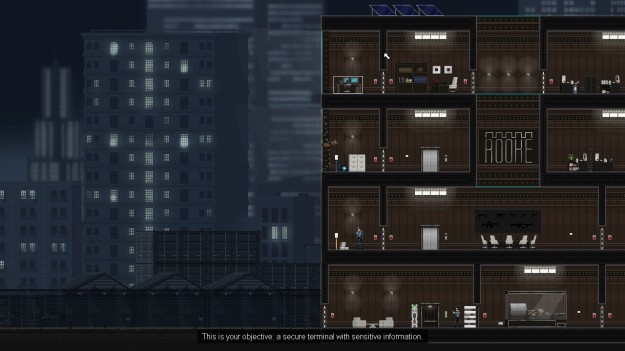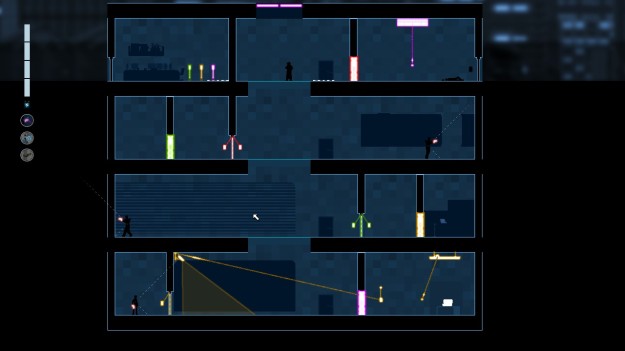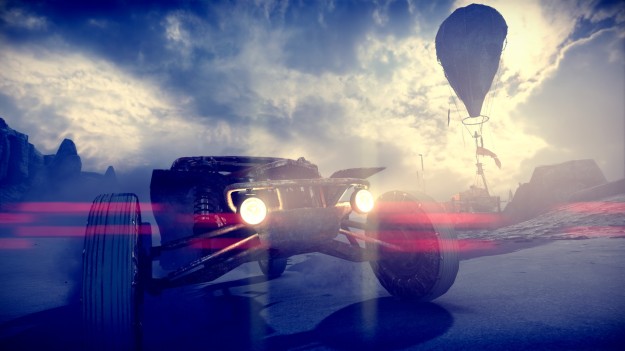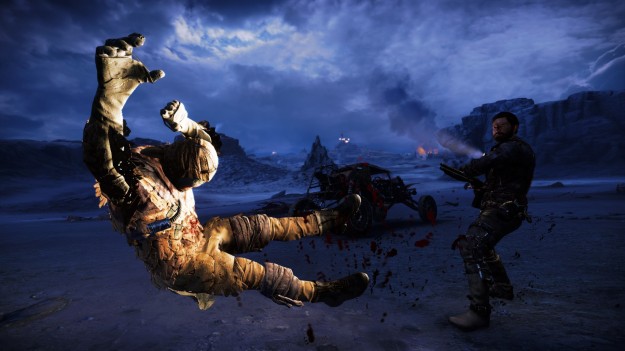Despite its many positives, it’s hard to dismiss the fact that Steam also has its many problems. DLC for early access games, shady gambling sites abusing the trading system… These are only two fairly recent examples that come to mind within the scope of its long lifespan. Perhaps one of the most glaring issues, however, comes in the form of an increasing lack of quality control, with Steam Greenlight and the Workshop allowing a plethora or poorly made content to flood out. Yet it’s with Steam’s review feature that this ‘race to the bottom’ perhaps irritates me the most, with random gibberish and stale jokes frequently rising to the top sat the expense of more helpful and relevant opinions. Recent changes have set out to fix things for the better, but it’s clear a lot remains to be done – so what other changes can be made to help improve the system?
—
Well, in my opinion, there are a few changes which incur only positive benefit. Well, one change that I feel can only incur a positive benefit relates to the ability to mark a review as ‘funny’; put simply, it’s something I think should be removed altogether. It’s the ability to have your review marked as such that perpetuates such low effort jokes as “Still better than No Man’s Sky” and so on, yet such feeble attempts at comedy are simply not what a review should be used for. As Valve themselves believe, they should be used to inform a prospective buyer, giving them more information and letting them know a game’s positives and negatives so they can make an informed buying decision… Something ‘funny’ reviews simply do not do. I appreciate joking about a game’s quality and such is all part of the community spirit, but it’s not like there’s nowhere else on Steam such things can take place – the game’s own forum is the immediate example that jumps to mind here. It’s just unnecessary for it to happen elsewhere.
The second change I feel would contribute is allowing people to review a game without actually having to write anything. Such reviews would still count towards a game’s standing, but could appear as a simple line such as “<player> recommended this title” (or perhaps not appear at all?) in the reviews section. This completely wipes out reviews filled with gibberish and many of the simple one line summaries players post, freeing up space for more substantial reviews to take their place. It also makes sense on the basis I accept not everyone has an opinion they actually want to voice about a title – they simply want to let others know if they liked or disliked it. There’s a possibility this could be open to abuse, of course; allowing a review to be posted with one or two mouse clicks could allow people to flood a game with negative reviews using multiple accounts reasonably easily. Counter measures to this could easily be devised, however, and when all it takes is mashing the keyboard with your face to see your review be accepted regardless, it’s fair to say such reviews are already getting through the system anyway.
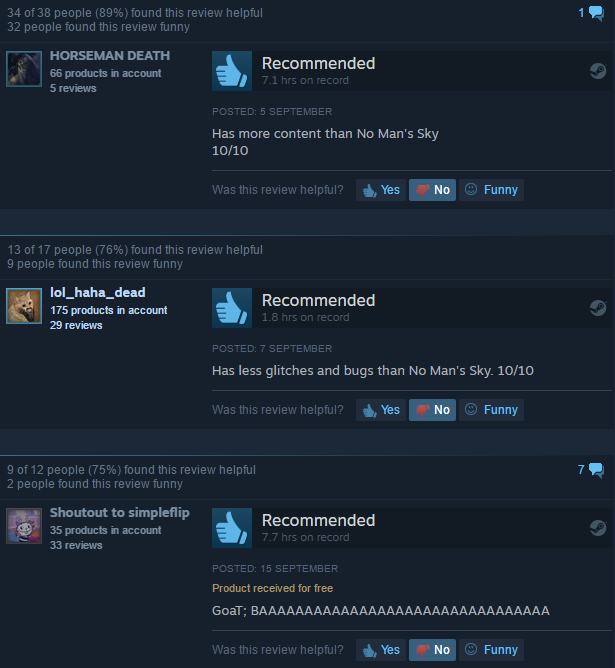
The next issue is the problematic one, though. Currently, reviews marked as the most helpful by users (and therefore appear near the top of the reviews section) are a mixed bag – you have your actually decent opinion pieces mixed in with ones that really don’t contribute that much. So how do you make it so the former take precedent over the latter? The current method of giving full power to the users, as logical and noble as it sounds, isn’t really working in my eyes. Take a look around, and you’ll see that people’s voting patterns means that there’s hardly a game on the service where all the most helpful reviews can actually be seen as… Well, helpful. Yet it’s not exactly like Valve is going to step in to moderate the system any time soon, considering their notorious hands-off approach to most matters, never mind the fact there’d be a full scale riot going on if they were to go in and determine what’s ‘good’ and ‘bad’. So what’s the solution?
Honestly, I’m not sure. The idea of giving powers to certain users to moderate reviews and flag those which don’t contribute played on my mind for a brief while, but with the recent fiasco regarding Youtube Heroes it’s clear that such a system just wouldn’t work in practice. What’s to stop a user flagging a review they disagree with? And surely it’s not our job to go around moderating Valve’s system in the first place? A more subtle approach is perhaps just giving slightly increased weighting to a user’s opinion on whether a review is helpful or not, based on how frequently their own reviews have been marked as useful. It’s an idea that I feel has some merit, but it poses its own problems – if someone posts a few poor joke reviews that happen to be praised by the community, the chances are they’ll use their increased influence to recommend similar reviews, which only perpetuates the problem. Valve themselves have stated they don’t want certain user’s reviews to over influence the system, so any sort of weighting would also have to be incredibly finely balanced. Done right, however, I feel like it could help, allowing positivity to breed positivity. It’s just doing it right (and in a way that doesn’t irritate a highly volatile user base) that’s the real issue.
—
I accept that perhaps I’m just being a highbrow elitist, trying to enact higher standards on a system that most users seem fairly content with just letting continue as it is. Yet with Valve themselves stating they are looking into the same matters and heading towards the same goals, and the end result of that waiting to be revealed, perhaps the suggestions above may have some merit to them yet. Here’s hoping that whatever happens, though, we’re left with a system that lets the quality that’s lurking within it truly shine.
